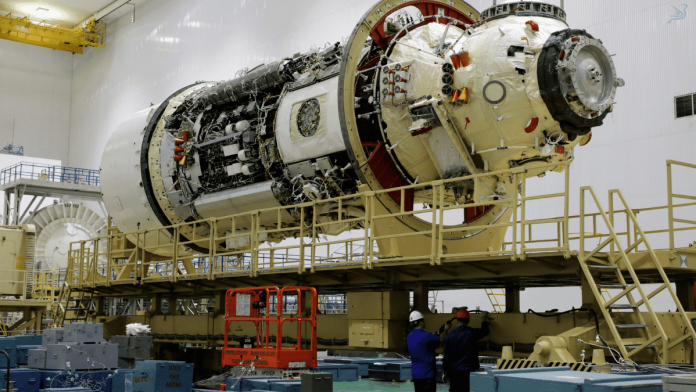Hello People!
In today’s blog we will be discussing the Nauka Module of Russia. The Russian Space Agency Roscosmos recently launched its biggest space laboratory to the International Space Station (ISS). We will explain in detail what this module is, how it is significant, its salient functions and other related points.
Let us start by knowing about Nauka.
What is Nauka?
Nauka means ‘Science’ in Russia. It is 42 feet long and weighs almost 20 tonnes.
It was supposed to be launched in 2007 according to the original plans of the ISS. But due to several technical issues the launch kept getting postponed.
This new module was launched using a Proton rocket, Russia’s most powerful space inventory. It will take 8 days to reach the ISS. Engineers and flight controllers will test Nauka in space at this time and prepare for its arrival on the space station.
Significance
- Nauka will be attached to the Zvezda module. The Zvezda module provides all the space station life support systems. It also serves as the structural and functional center of the Russian Orbital Segment (ROS).
- It will replace Pirs, which is a small structure only used as a docking port for Russian spacecraft.
- For future operations, Nauka will function as a new science facility, docking port, and spacewalk airlock.
- It has also been tasked with transporting another oxygen generator, as well as a spare bed, a toilet, and a robotic cargo crane created by the European Space Agency, to the International Space Station.
What is the Pirs Module?
Pirs (in Russian ‘piers’) docking module was launched to the International Space Station on September 14, 2001. It was docked with Zvezda three days later to become the space station’s sixth pressurized module. Over the course of its two-decade service, the flying port successfully docked and undocked 70 vehicles arriving in microgravity. Over the years, the airlock on the segment has been used for 53 spacewalks by astronauts and cosmonauts.
International Space Station
The International Space Station is a large spacecraft. It revolves around the Earth. It is a residence for astronauts. A space station is a huge spacecraft that spends a significant amount of time in low-Earth orbit.
It is the collaborative effort of NASA (United States), Roscosmos (Russia), JAXA (Japan), ESA (Europe) and CSA (Canada).
The International Space Station, worth $100 billion, has the length of a football field and the living space of a five-bedroom house. The station was built over the course of more than 115 spaceflights by various types of spacecraft. Astronauts and cosmonauts have spent more than 1,000 hours on spacewalks outside of the station.
According to NASA, 243 people from 19 countries have visited the ISS so far. The floating laboratory has hosted over 3,000 research and educational studies from researchers in 108 nations and regions, doing cutting-edge study in a variety of disciplines such as biology, human physiology, and physical, material, and space science.
With this we come to the end of this blog. We discussed the nauka module of Russia and its importance. We also mentioned the single largest man-made structure that is the International Space Station as well as the Pirs module.
Stay tuned with hranker.com for more such blogs.




